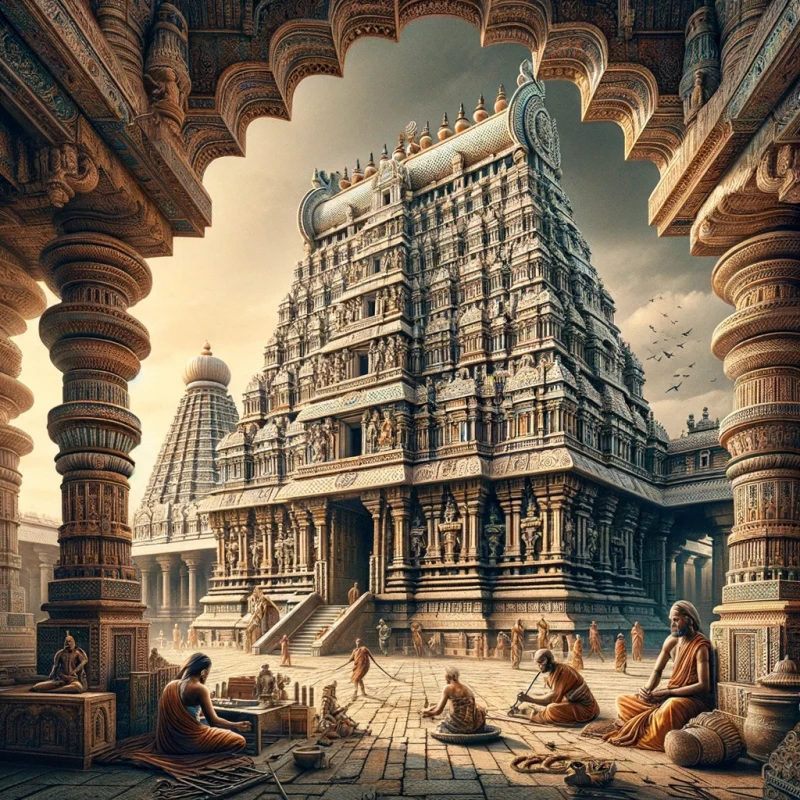- Apr 26, 2024
-
Introduction
Nestled in the heart of Tamil Nadu, the Tiruvannamalai Temple stands as a beacon of spiritual and architectural splendour. Known for its vast complex and intricate design, this temple is a prime example of Dravidian architecture—a style renowned for its grandiose scale and elaborate ornamentation. This blog delves into the architectural nuances of the temple, exploring its layout, decorations, and the symbolism embedded in its structures.
The Layout and Structure of Tiruvannamalai Temple
The Tiruvannamalai Temple, dedicated to Lord Shiva, is built around the base of the sacred Arunachala Hill. It is one of the largest temple complexes in India, covering an area of over 10 hectares. The temple is encircled by massive walls, adorned with four colossal gateway towers known as gopurams. These towers are not merely decorative; they are deeply symbolic, representing the spiritual journey from the material world to the divine essence.
Majestic Gopurams: The Gateway to Divinity
Each gopuram at the Tiruvannamalai Temple is a towering masterpiece, rising up to 66 meters high and decorated with thousands of stucco figures that depict various deities, mythological creatures, and scenes from Hindu epics. The largest and most famous is the eastern Rajagopuram, which was completed in the 16th century. These structures are not only aesthetically stunning but also serve as astrological markers, with their positioning relative to celestial bodies playing a crucial role in the temple’s spiritual significance.
Intricate Carvings and Sculptures
The walls, pillars, and ceilings of the Tiruvannamalai Temple are intricately carved with images of gods, goddesses, and mythical beings, each telling a story from ancient scriptures. The precision and detail in these carvings reflect the skilled craftsmanship of the temple's artisans. Notably, the Thousand Pillar Hall, an architectural marvel within the complex, showcases an array of sculptures that illustrate the advanced stone-carving techniques of ancient India.
Symbolism and Sacred Spaces
Beyond its physical beauty, the architecture of Tiruvannamalai Temple is laden with spiritual symbolism. The central shrine, housing the deity of Lord Shiva represented as a lingam, is the focal point of the temple. This sanctum is designed to align with the natural energies of Arunachala Hill, believed to be a manifestation of Lord Shiva himself. The temple layout follows sacred geometry, creating a space that enhances meditation and prayer.
Conclusion
The Tiruvannamalai Temple is more than just a place of worship; it is a monumental testament to the artistic and spiritual heritage of Tamil Nadu. Its architecture not only captivates the eyes but also stirs the soul, making it a must-visit for anyone interested in the convergence of art, history, and spirituality. Whether you are a devotee, history buff, or architecture enthusiast, the temple offers a profound glimpse into the divine and the extraordinary craftsmanship of ancient India.
Visiting the Tiruvannamalai Temple provides not just a cultural excursion but an opportunity to witness the living traditions of Hindu worship and the timeless beauty of Dravidian architecture.


Comments :
Currently, there are no comments in this post. Be the first person to comment on this post.